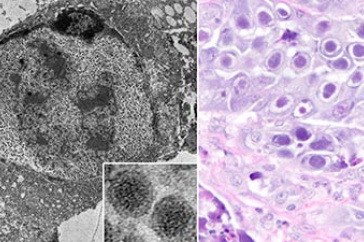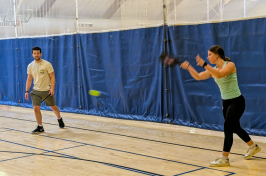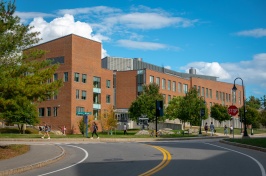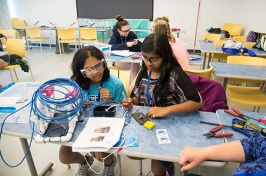NH Veterinary Diagnostic Lab Identifies First Ever Reported Case of a Virus in Chimney Swifts

EDITORS AND REPORTERS: UNH Veterinary Pathologist David Needle is available to speak to reporters. He can be reached at david.needle@unh.edu.
DURHAM, N.H.—Pathologists with the New Hampshire Veterinary Diagnostic Laboratory at the University of New Hampshire have identified the first reported virus in chimney swifts, a small bird that catches insects and spends most of its life airborne. The finding may represent the first member of an entirely new group of adenoviruses.
Chimney Swift Adenovirus 1 (CsAdV-1) was diagnosed in five nestling chimney swifts submitted to the lab by the wildlife rehabilitation center Avian Haven of Freedom, Maine. Avian Haven acquired the chimney swifts from South Portland, Biddeford, and Lewiston, Maine. The chief clinical sign noted was regurgitation or decreased appetite. This adenovirus has never been described in the scientific literature.
The adenovirus cannot be passed from animals to humans, although humans can contract human versions of adenoviruses from other people. Adenoviruses have been diagnosed in all classes of vertebrates, including mammals, reptiles, and birds. Adenoviruses in people can cause fevers, upper respiratory tract symptoms, and conjunctivitis; these infections usually are mild.
“The finding of a viral infection in these birds was exciting, because although we know that virtually all forms of life are likely susceptible to viral infection, no virus has been previously described by any diagnosticians or researchers, including in the five previous years of nestlings submitted to the NHVDL,” said David Needle, senior veterinary pathologist and assistant clinical professor. “Using genetic analysis, we found the virus quite distant from the most closely related adenoviruses. We believe this may represent the first identified member of a new genus of adenoviruses.” Needle was assisted in the lab by Inga Sidor, senior veterinary pathologist and clinical associate professor.
According to the Cornell Lab of Orinthology, chimney swifts are smudge-gray and nimbly maneuver over rooftops, fields, and rivers to catch insects. Their tiny body, curving wings, and stiff, shallow wingbeats give them a flight style as distinctive as their fluid, chattering call. This little bird spends almost its entire life airborne. When it lands, it can’t perch—it clings to vertical walls inside chimneys or in hollow trees or caves.
Needle also identified the first case of Skunk Adenovirus-1 in the United States. The respiratory disease was found in tissues of a hedgehog submitted for diagnosis by a veterinarian. It represents only the third confirmed detection of the virus in the world.
Identification of these animal adenoviruses highlights the importance of performing a thorough diagnostic workup when a perceived illness affects a group of animals. This applies to domesticated companion animals, exotic animals, agricultural animals, and wild animals.
“Accurately and rapidly identifying infectious agents is critical in safeguarding animal health, public health and New Hampshire agriculture,” said Robert Gibson, managing director of the New Hampshire Veterinary Diagnostic Laboratory. “Most infectious diseases in people, including the top bioterrorism agents, are considered zoonotic, which means they can be transferred from animals to humans.”
This research was presented in the journal Veterinary Pathology. It was supported by the New Hampshire Agricultural Experiment Station and the State of New Hampshire. Collaborating with UNH pathologists were Dalen Agnew, Annabel Wise and Roger Maes, Veterinary Diagnostic Laboratory Michigan State University; Christopher Gregory and Branson Ritchie, College of Veterinary Medicine, University of Georgia. The research would not have been possible without submission of case materials by Avian Haven.
The New Hampshire Veterinary Diagnostic Laboratory serves the state of New Hampshire as a key partner with the New Hampshire Commissioner of Agriculture and State Veterinarian in their efforts to monitor and control important animal diseases. The lab also provides diagnostic services to hundreds of veterinarians from New Hampshire and New England who use the lab’s histopathology, microbiology, serology, and necropsy services for the diagnosis of animal diseases in pets, farm animals, wildlife, zoo, and marine animals.
Founded in 1887, the NH Agricultural Experiment Station at the UNH College of Life Sciences and Agriculture is UNH’s original research center and an elemental component of New Hampshire's land-grant university heritage and mission.
Latest News
-
August 21, 2025
-
August 12, 2025
-
August 5, 2025
-
June 25, 2025
-
June 16, 2025















































